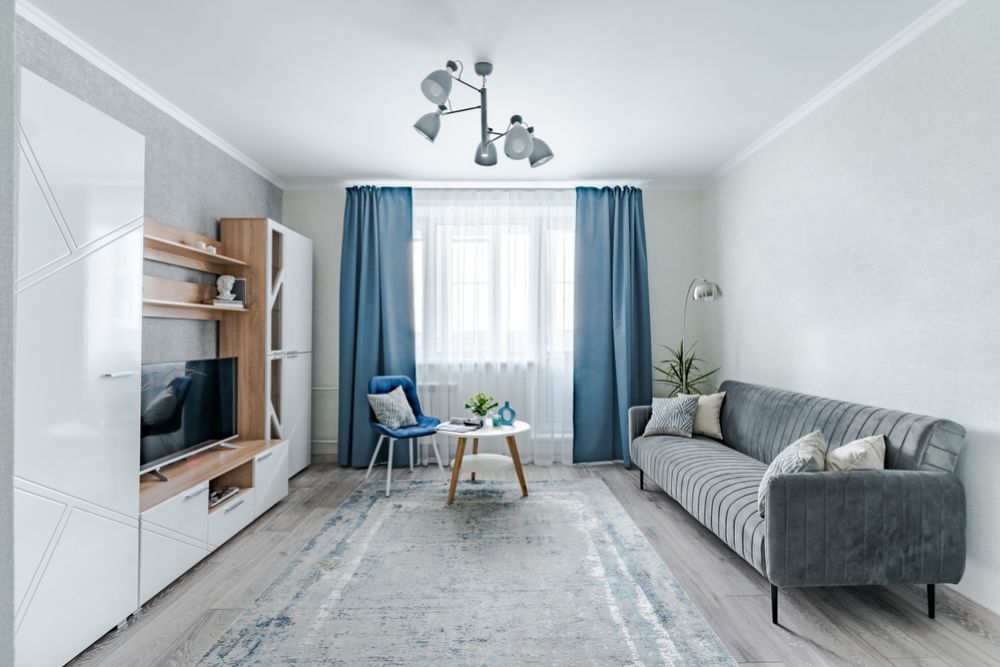Living in a small space doesn’t mean sacrificing comfort or style. In fact, with the right furniture, small rooms can feel spacious, functional, and even luxurious. The secret lies in smart planning and choosing pieces that make the most of every inch without adding clutter. Whether you're furnishing a studio apartment, a tiny home, or a compact bedroom, knowing how to choose the right furniture is key to making your space work harder and look better.
Here’s how to find furniture that helps your small space feel big on design and utility.
Measure Everything Before You Buy
The foundation of smart furniture shopping for small spaces starts with precise measurements. It’s not enough to eyeball dimensions—every inch counts when you’re trying to maximize functionality.
Before heading to the store or browsing online:
-
Measure the length, width, and height of the room
-
Mark doorways, windows, outlets, and traffic paths
-
Use masking tape or painter’s tape to outline the furniture footprint on your floor
This step ensures your furniture fits without blocking movement or overpowering the room.
Prioritize Multi-Functional Pieces
Furniture that serves more than one purpose is a game-changer in small spaces. Look for items that combine form and function to get more value out of less square footage.
Great examples include:
-
Sofa beds or futons that convert into guest beds
-
Ottomans with hidden storage
-
Extendable dining tables that fold out for guests
-
Desks that double as vanities or nightstands
-
Beds with built-in drawers or shelves underneath
These dual-use pieces help reduce clutter and maximize storage without compromising style.
Choose Light and Compact Designs
Bulky furniture can overwhelm a small room, making it feel cramped and crowded. Instead, choose pieces that are visually light and take up minimal physical and visual space.
Smart design choices:
-
Leggy furniture: Pieces with exposed legs feel lighter than blocky ones
-
Glass tables: Transparent surfaces keep the room feeling open
-
Slim profiles: Look for narrow armrests, thin tabletops, and clean lines
-
Floating shelves: Wall-mounted options save valuable floor space
Lighter colors and minimal detailing also help furniture blend in, creating the illusion of more space.
Go Vertical with Storage
When floor space is tight, the only way to go is up. Use vertical storage solutions to keep things organized and off the ground.
Space-saving vertical ideas:
-
Tall bookshelves and cabinets
-
Wall-mounted shelves and hooks
-
Over-the-door organizers
-
Pegboards for kitchen or office supplies
Vertical storage not only saves space but also draws the eye upward, making the room appear taller and more open.
Invest in Custom or Modular Furniture
If your space has awkward dimensions or tight corners, custom or modular furniture can be a great investment. These pieces are designed to fit your space perfectly and adapt to your needs.
Benefits include:
-
Tailored fit for oddly shaped rooms
-
Add-on units as your storage needs grow
-
Mix-and-match flexibility for different uses
Modular systems are especially useful in small kitchens, home offices, and multipurpose rooms.
Opt for Foldable and Stackable Options
Foldable and stackable furniture is a smart solution for rooms that serve multiple functions. These items can be easily stored when not in use, freeing up valuable space.
Look for:
-
Folding chairs or stools
-
Nesting tables
ADVERTISEMENT -
Wall-mounted drop-leaf desks
-
Stackable dining chairs
These pieces are perfect for small homes that occasionally host guests or need flexible layouts.
Stick to a Cohesive Color Scheme
A consistent color palette can help small rooms feel more unified and less chaotic. Too many contrasting colors or materials can create visual clutter.
Tips for cohesive design:
-
Use light or neutral colors to reflect light and open up the space
-
Match furniture tones to wall and floor colors for flow
-
Add pops of color through smaller items like cushions or artwork
Consistency in texture and tone can make your space feel calmer and more open, even with limited square footage.
Keep Storage Clutter-Free
In small rooms, visible clutter is a big problem. Choose storage furniture that lets you tuck things away neatly so surfaces stay clear and the room feels calm.
Storage furniture that helps:
-
TV stands with cabinets or drawers
-
Coffee tables with compartments
-
Benches with lift-top storage
-
Nightstands with multiple drawers
Use storage bins or baskets inside drawers to keep small items organized and easy to find.
Don’t Forget About Corners
Corners are often underutilized in small rooms. Look for furniture specifically designed to fit into corners to squeeze out extra functionality.
Ideas include:
-
Corner desks or vanities
-
L-shaped sofas or sectionals
-
Corner shelving units
-
Triangular corner tables
Filling corners smartly can open up the center of the room for better flow and breathing room.
Consider Transparent and Reflective Materials
Furniture made from transparent or reflective materials can make a small space feel more open and less crowded.
Top picks:
-
Glass dining or coffee tables
-
Acrylic chairs or stools
-
Mirrors on walls or closet doors
-
Metallic accents that bounce light
These pieces add visual interest without adding weight or bulk to the room.
Choose the Right Scale
One of the biggest mistakes in furnishing small spaces is choosing items that are either too large or too small. Furniture that’s too big dominates the room, while pieces that are too small can make the space feel disjointed.
Tips for getting the scale right:
-
Avoid oversized sectionals in tiny living rooms
-
Use apartment-sized sofas or loveseats
-
Choose beds that leave walking space on either side
-
Make sure there’s balance between furniture size and wall height
Properly scaled furniture feels intentional, not cramped or forced.
Furnishing a small space doesn’t have to be limiting—it’s an opportunity to be creative, intentional, and efficient. By focusing on multifunctional, scaled, and space-smart furniture, you can create a home that feels open, functional, and welcoming no matter how compact it is.
Measure carefully, plan vertically, and don’t underestimate the power of hidden storage. When every piece serves a purpose and fits your lifestyle, even the tiniest room can feel like a perfect fit.





